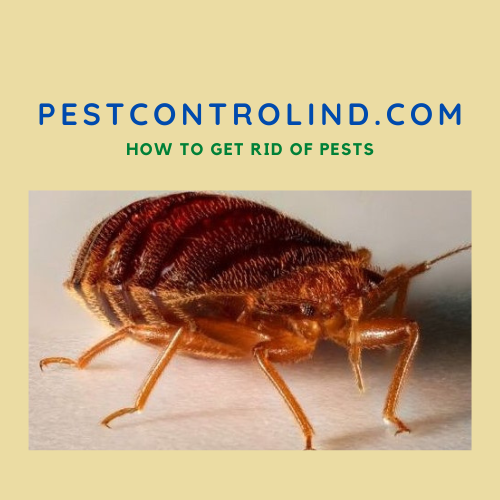How to get rid of ground moles with vinegar? Is it effective? Is it really effective? What are the good arguments for using vinegar against moles? And what is the best way to get rid of moles?
Let’s look at the background of the question in detail:
I. Why do moles come to Our garden?
Food is one of the main causes of the presence of moles in a garden.
Indeed, cultivated land is rich in various parasites and insects. Insects, larvae, grubs, and pupae are found in leaves, grass, soil, and subsoil.
And when soil is rich, it becomes loose and easier to dig up and also full of worms, the moles’ favorite food.
It is almost normal to find moles in your garden when it is well-worked.
Identifying their presence in the garden is not difficult, because they leave very obvious footprints, several furrows with sometimes mounds in the ground.
The mole is considered by some to be a plague that has a very rapid expansion, because of its construction capacity, as it is able to build tunnels at a speed of 4 meters per hour.
II. How to get rid of ground moles with vinegar? Is it effective?
The technique proposed by some people is really very appealing. Anyone who has this problem with garden moles just has to take half vinegar mixed with half water and fill all the holes the moles have left in the garden or lawn with this magic formula.
Unfortunately, there is almost no chance that this technique will work on moles. It may interfere with their keen sense of smell for a few minutes, or even hours if they are near the hole where the smell is. Otherwise, they won’t even notice it.
Indeed, the mole digs several secondary tunnels to be able to move inside the ground, in search of the earthworms and other insects found there. The admittedly annoying smell of vinegar has almost no chance of reaching the mole’s nest.
And even if it does, it will move to another location until the smell disappears.
III. Is it Safe to Remove Moles with Vinegar?
Yes, it is safe to use any vinegar in any situation. It is almost harmless to human breath and even when consumed in small quantities.
And even the soil is safe in small quantities. But, as we have just seen, vinegar (white or cider vinegar), has almost no effect on moles.
Try it and you will see that it is almost a waste of time and a waste of money.
IV. The False Case for Vinegar’s Effectiveness in Driving Away Moles
It is true that vinegar is safe for humans, moles and other animals. It is true that it is not at all expensive and within everyone’s reach. And it is true that it is easy to use. Unfortunately, for us, it is not effective in scaring away or keeping moles away, even for a while, from our garden.
It would be a dream for all garden and lawn lovers if this good product could add to its range of uses, this function of scaring away moles by its smell from the basement of our gardens.
Unfortunately, vinegar cannot get rid of moles or scare them away.
V. Why vinegar has no chance of working on moles
Despite its odor, which should bother moles a little, vinegar is quickly absorbed by the soil and loses all its odor within a few hours, even days, especially if our soil is sandy.
And even if the soil is clayey, the vinegar is a liquid, it remains stuck in the part of the soil where we put it while it evaporates, whatever the outside temperature.
On top of that, all odors usually disappear in a few hours or even days and the mole will probably move to a tunnel where it is not bothered.
And even if we managed to put vinegar in all the existing tunnels, the mole will almost automatically dig again in a hurry and then protect itself from the smell by blocking the link between the old smelly tunnels and the new ones it has just dug.
VI. The most effective way to get rid of moles
There are several ways to get rid of moles, which are more or less effective, depending on the degree of infestation of the subsoil and other factors.
Some repellents such as ultrasound have a very limited capacity to make them leave your lawn or garden, despite all the publicity they get.
Other means like mothballs, vinegar, and other tricks are even less effective than ultrasound. I’m not saying that it couldn’t work in the absolute, but it’s obvious that the chances of getting moles out of rich soil are very slim.
The only two effective means that have been proven to work are wire mesh and death traps.
1. Fencing
Fencing is mainly used for small plots and lawns. Because it requires a lot of resources and can cost a lot of money, as the area to be protected is very large.
To do this, you will have to dig a trench of at least 19 inches (50 centimeters) (or even one meter if the soil is quite soft over a large depth) all around the area you want to protect from moles.
The trench must be at least 7.5 inches (20 centimeters) wide. And the holes in the wire mesh should be at most 0.5 inches (1.5 centimeters.)
Then you must line the trench with gravel or small stones for at least (2 inches) 5 centimeters before laying the wire mesh, taking care to block the bottom of the mesh with this gravel, otherwise, the moles will find a way to lift it to get underneath.
Note that you need at least 7.5 inches (20 more centimeters) of wire mesh that will come out of the ground to prevent the moles from eventually going over it.
Remember that the wire mesh is only made for small plots of land because the cost is very high for large plots.
2. Mole traps
This is not to denigrate all the possible solutions to keep moles away, starting with natural products such as vinegar and marshmallow, but the most effective and ecological remains the old trap used for hundreds of years. And there are many different models, for different purposes and functions. And each mole trap uses a different capture method to perform that function.
Some models trap the mole alive inside without harming it and others have mechanisms that kill the animal instantly.
Which one you choose will depend on the purpose for which you want to use them.
For example, if your intention is not to kill the mole, the ideal choice is tubular traps that allow the animal to enter, but make it impossible to leave. This way, you can release the mole in an area away from your home where it can’t harm your garden and others.
Conclusion
Plants sold as repellents (Euphorbia lathyris, Fritillaria imperialis, incarvilla…) are unfortunately useless against moles.
The same can be said of the malodorous repellents to be put inside the gallery. The mole is almost insensitive to odors and when it finds a nuisance in a gallery, it simply clogs it!
Ultrasonic repellents and their domestic equivalents (bottle on a post, sticks snapping in the wind, etc.) keep moles away for a while.
But the repetitive noise eventually convinces the mole that there is no danger and he eventually returns. Its survival instinct remains strongest, it will always be where there is abundant food.

VII. Other Questions about getting Rid of Grounding Mole
1. How to give a small space to a mole
The best way to manage garden moles is to find a way to live with them.
In the garden beds, the animal’s passage is rarely a nuisance. It is in the lawn and orchard that it creates problems.
Where the plants have not been watered, the animal circulates less. It may be worthwhile not to water the lawn too much, to save water during the summer, and incidentally discourage moles from coming.
You can also get used to putting dead leaves in large piles, directly on the ground.
The moles will colonize this area and will be less tempted to explore the rest of the garden, which is less interesting to them than the fresh soil under the leaves.
2. What home remedy can I use to get rid of moles?
In practical life, those who have experience in hunting moles all say that there is no way to get rid of moles other than traps.
It may be that a homemade trick will work for a while, but the mole is a smart enough animal to outwit all such tricks.
Experienced people have all found that the animal adapts and soon all the tricks become obsolete.
And even ultrasound devices do not work in the long run.
The only two ways to deal with moles are either to live with them, which is a good resolution because, in the end, moles are not so bad for our gardens. Or to exterminate them with death traps that are installed in the openings of their tunnels.
3. Do ground moles eventually go away?
It is unlikely that a mole will leave an occupied field by itself, but sometimes the soil becomes poor and does not allow it to feed.
I think this is the only reason that a mole would disappear from a field on its own.

